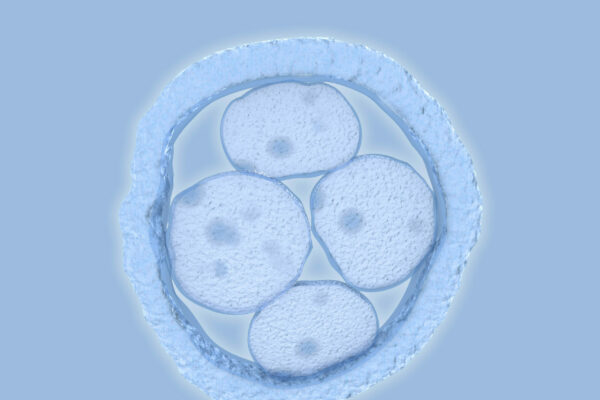Some men do not have enough sperm in their ejaculate to succeed with IVF. Fortunately, with the use of ICSI, many of these men will still have the opportunity to proceed with IVF. As long as there are some sperm in the testicle, these sperm can usually be obtained and individually inserted into their partner’s (or donor’s) eggs with Intra Cytoplasmic Sperm Injection (ICSI).
In broad terms, men with no sperm in their ejaculate can be placed into one of two categories:
- Obstructive Azoospermia: This means that there is a blockage in the ducts that are supposed to carry sperm from the testicle. This can either be acquired, such as after a vasectomy, or congenital. Generally, these men have normal sperm production but the sperm flow is blocked. Because the sperm production is normal, sperm can be reliably obtained simply by passing a tiny needle into the epididymis (percutaneous epididymal sperm aspiration or PESA) or testicle (testicular sperm aspiration or TESA) with local anesthesia or sedation. If this is not successful, a sliver of the interior portion of the testicle can be removed. This is called testicular sperm extraction or TESE. Sperm are retrieved in the vast majority of these patients. The retrieved sperm are frozen and utilized during a subsequent IVF cycle.
- Nonobstructive Azoospermia: This means that there are no sperm in the ejaculate because sperm production is dramatically reduced. Still, many of these men will have areas in the testicles that are producing sperm and if these areas can be identified, the sperm can be used for IVF with ICSI. Several techniques are used to obtain sperm in this setting. The oldest technique is testicular biopsy of multiple areas of the testicles. A newer technique, microdissection testicular sperm extraction (micro-TESE), involves dissection of the testicle using an operating microscope. The areas of the testicle which are more likely to be making sperm are identified and removed. A third technique, testicular mapping, involves tiny needle biopsies of the testicles and examination of the fluid so that a biopsy can be targeted to the area most likely to contain sperm. A male infertility specialist performs these sophisticated procedures.
In conclusion, with the advent of ICSI and newer testicular sperm acquisition techniques men previously thought to be infertile are potential candidates to father pregnancies.





